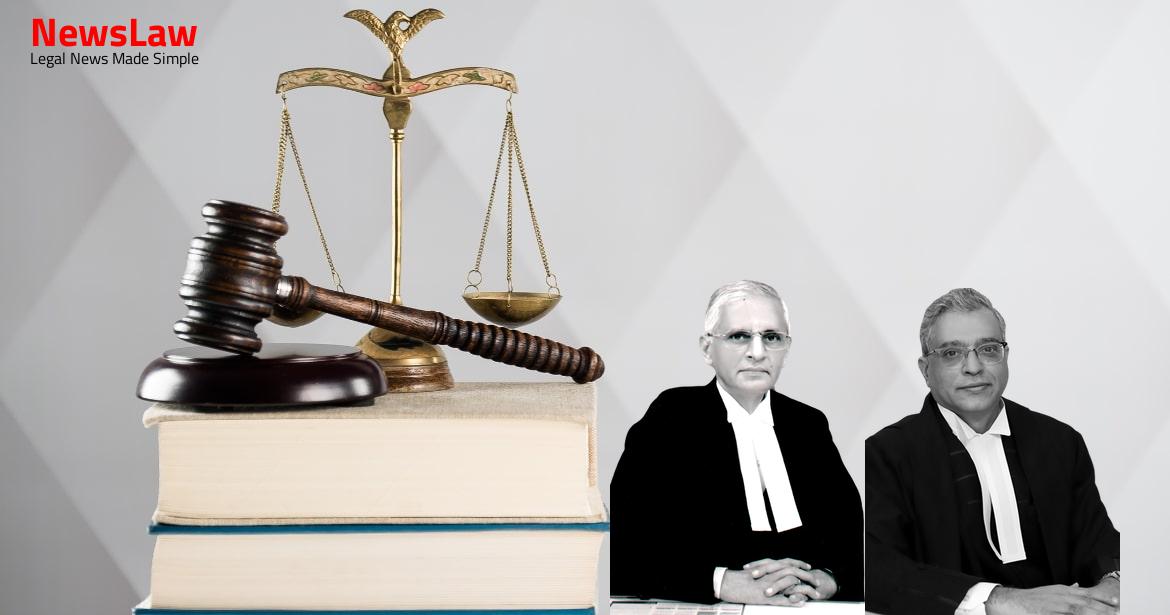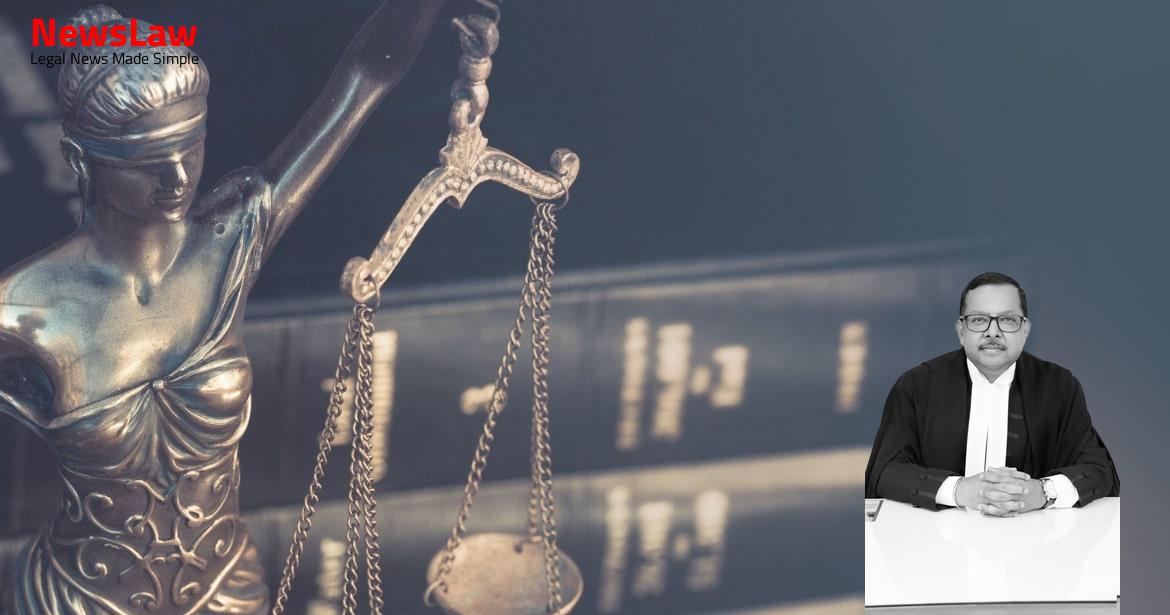These appeals are directed against the judgment of the High Court of Kerala upholding the conviction of Accused Nos. A few protestors even went inside the garage of KSRTC, and when the KSRTC workers repelled them, the protestors turned even more violent, leading to the death of one Mr. 17 and 19 being part of the mob, formed an unlawful assembly which resulted in riots and wide-scale destruction of public property. 17 and 19 were also alleged to have caused the death of Rajesh. 1 Test Identification Parade:
Also Read: https://newslaw.in/supreme-court/legal-analysis-of-circumstantial-evidence-in-a-murder-case/
Conducting a Test Identification Parade was crucial for the prosecution as there were more than 1500 people who were part of the mob, and only a handful of them were arrested and charge-sheeted. The IO (PW-84) could, however, arrange only for thirty non-suspects being twenty police officers and ten civilians. In addition to these thirty non-suspects, the Judicial Magistrate (PW-47) is said to have shortlisted twenty-one undertrials to participate in the TIP. 1-16, the non-suspects were asked to leave, and when the suspects were alone, they were asked if they had any complaints about how the TIP was conducted. In that view of the matter, permission to conduct the 2 TIP was sought from the CJM by the IO (PW-84) to facilitate the identification of the Accused in three phases – (i) In the 1 Phase to identify Accused Nos.
After the identification process culminated, Accused No.19, for himself and the other two accused, stated that while they were in police custody, they were shown to the six witnesses, PWs 1, 3, 4, 5, 6 and 7. Thus, it can be seen that from the very beginning, the Accused had objected to how the TIP was conducted and the events preceding it, which inter-alia included – (i) the Accused being shown to the witnesses from the cabin of the IO (PW-84); (ii) the Accused being photographed and video-graphed while they were in police custody; (iii) securing the presence of the witnesses in court while the accused were produced for extension of their remand; and (iv) the Accused wearing the same dress straight from their arrest till the date of the TIP. Sessions Court and High Court:
On 26.05.2005, the Sessions Court framed charges under Sections 120B, 143, 147, 148, 324, 427, 506, 302, 109 and 111 r/w 149 of the IPC and Sections 3(2) (e) of the PDPP Act against Accused Nos.
Also Read: https://newslaw.in/supreme-court/scope-of-rule-making-power-in-disciplinary-proceedings/
Re: Conspiracy hatched by Accused No 1-2 and 25-33 : To establish a conspiracy case against Accused Nos. 1-2 and 25-33, the prosecution examined PW-68 and PW-85.
The High Court, in appeal, set aside this conviction and instead found them guilty under Section 326 r/w 34 of the IPC and sentenced them to 7 years of rigorous imprisonment. 1-7, 9-12, 14, 16 and 18 under Sections 143, 147, 148 of the IPC and Sections 3(2)(e) of the PDPP Act r/w Section 149 of the IPC : To establish the charge of destruction of public property, the prosecution relied upon the evidence of PWs 5, 6, 8, 31 and 33, as eye-witnesses to the crime. The Sessions Court rejected all the objections to the legality and credibility of the TIP by holding that (i) the IO (PW-84) was just present and did not influence the TIP in any manner; (ii) the imbalance in the ratio between suspects and non-suspects in the TIP is not the Judicial Magistrate’s (PW-47) or the IO’s (PW-84) fault, because they tried their best to fetch more non-suspects; (iii) the IO (PW-84) took steps to prevent disclosure of identity of accused to witnesses before the TIP by covering the side of the vehicle in which they were brought to the court for extension of remand, though, he also stated that he did not put a mask on them; (iv) there is no material to show that photographs or video- graphs of the Accused were taken and shown to the witnesses prior to the TIP; and (v) even though PW-3 and PW-4 admitted in cross-examination before the Court that some of the accused were shown to them before the TIP, during re-examination, both of them frankly admitted that after the incident, they had seen the miscreants for the first time during the TIP. The Court below has made its finding regarding the offence punishable under Ss.143, 147 and 148 IPC and S.3(2)(e) of the PDPP Act, based on the identification of the various witnesses in court. 1-7, 9, 14, 16 and 18, at the very outset, contended that the High Court has not rendered any independent finding on the issue of destruction of public property and has merely reiterated what the Sessions Court had held. 1-16 were in his custody when he questioned the eyewitnesses in his office; (v) PW-3 and PW-4 have admitted that they had seen the Accused while they were at the Police Station; (vi) PW-1, PW 8-12 and PW-33 have admitted that they had identified the Accused in the TIP based on the pictures they saw in the newspaper; (vii) the Accused had complained that while they were in police custody, they were photographed and shown to the witnesses from the cabin of PW-84; (viii) Remand Report dated 14.07.2000 clearly stated that Accused Nos.
10-12 contended that the statements given by PW- 5, PW-6 and PW-8 could not form the basis of conviction because (i) PW-5 had stated in his deposition that he was not present at the time of the incident and that he reached the place of occurrence only after the incident; (ii) PW-6 could only identify Accused Nos. 17 and 19 and could generally identify the other accused as the agitators; (iii) PW-8 had stated in his deposition that he identified the Accused on the basis of the images he saw in a newspaper.
State represented by Inspector of Police, where this Court had held that no importance could be attached to a TIP where the photos of the alleged suspects were making rounds in newspapers and also when the witnesses had a chance to look at the accused while the accused were in police custody.
State of Kerala, to support the same point; (ii) a TIP can be accepted as a piece of evidence based on the subjective satisfaction of a court, which has occurred in this case; (iii) if there were concerns about the manner in which the TIP was conducted, then the TIP itself should have been challenged. In that view of the matter, it was submitted that when it has not been challenged, then under Section 80 of the Indian Evidence Act, 1872, a presumption arises that the TIP Report is a valid proof of evidence; (iv) the JFMC (PW-47) took every measure within his reach to ensure smooth conduct of the TIP; (v) the IO (PW-84) took all possible measures to ensure that the TIP is conducted at the earliest possible opportunity; (vi) reliance was placed on the decision of this Court in the case of Munna Kumar Upadhyay v. First, to enable the witnesses to satisfy themselves that the accused whom they suspect is really the one who was seen by them in connection with the crime. Therefore, TIPs, even if held, cannot be considered in all the cases as trustworthy evidence on which the conviction of an accused can be sustained ( State of H.P. It is a matter of great importance both for the investigating agency and for the accused and a fortiori for the proper administration of justice that a TIP is held without avoidable and unreasonable delay after the arrest of the accused. In cases where the witnesses have had ample opportunity to see the accused before the identification parade is held, it may adversely affect the trial. If identification in the TIP has taken place after the accused is shown to the witnesses, then not only is the evidence of TIP inadmissible, even an identification in a court during trial is meaningless ( Shaikh Umar Ahmed Shaikh and Anr. This gives credibility to the TIP and ensures that the TIP is not just an empty formality ( Rajesh Govind Jagesha v. PW-3, in his deposition before the Sessions Court, stated that: “ Prior to the date of identification parade, I had been to the Cr i me Branch office on different days.
Also Read: https://newslaw.in/supreme-court/conviction-and-sentencing-analysis-in-a-criminal-appeal-case/
PW-4, in his deposition before the Sessions Court, has stated that: “I went to Crime Branch office for giving statement. ” Both these witnesses, during their re-examination, have, however, contradicted themselves by stating that they saw the Accused for the first time during the TIP. PW-6, whose evidence has been relied upon by the prosecution, has also stated that he had visited the crime branch office eleven days prior to the 1 TIP, i.e., on 20.07.2000. On the other hand, PW-8, whose evidence has also been relied upon by the prosecution, has stated in his deposition that he identified the Accused in the TIP based on the pictures published in a newspaper.
State of UP, had directed that sufficient precautions have to be taken to ensure that the witnesses who are to participate in the TIP do not have an opportunity to see the accused before the TIP is conducted. But, the question arises: what value could be attached to the evidence of identity of accused by the witnesses in the Court when the accused were possibly shown to the witnesses before the identification parade in the police station. The reliance of evidence of identification of the accused in the Court by PW 2 and PW 11 by the Designated Court, was an erroneous way of dealing with the evidence of identification of the accused in the Court by the two eyewitnesses and had caused failure of justice. Photographs of the appellant and the said Udayakumar were not only published, according to the prosecution witnesses, they were shown to be the accused in the aforementioned crime. Such test identification parade was required to be held as early as possible so as to exclude the possibility of the accused being identified either at the police station or at some other place by the witnesses concerned or with reference to the photographs published in the newspaper.
In fact, all the Accused collectively stated that they were wearing the very same dress, straight from their arrest, till the date of the TIP to indicate that the TIP did not serve its purpose. The following decisions of this Court on the consequence of delay in conducting TIP have emphasised that the possibility of witnesses seeing the accused by itself can be a decisive factor for rejecting the TIP. State of UP, this Court set aside the conviction imposed on the appellant therein, on the ground that no conviction can be based by solely relying on the identification made in a TIP. This Court suspected that the delay in holding the TIP could have enabled the identifying witnesses to see the accused therein in the police lock-up or in the jail premises. State of Maharashtra, a delay of about one month was viewed seriously by this Court since there was a possibility of the accused being shown to the witnesses. State of Bombay, has held that any identification made by witnesses in a TIP in the presence of a police officer tantamount to statements made to the police officer under Section 162 Cr.P.C. When the identifications are held in police presence, the resultant communications tantamount to statements made by the identifiers to a police officer in course of investigation and they fall within the ban of Section 162 of the Code.”
Case Title: GIREESAN NAIR Vs. THE STATE OF KERALA (2022 INSC 1199)
Case Number: Crl.A. No.-001864-001865 / 2010



